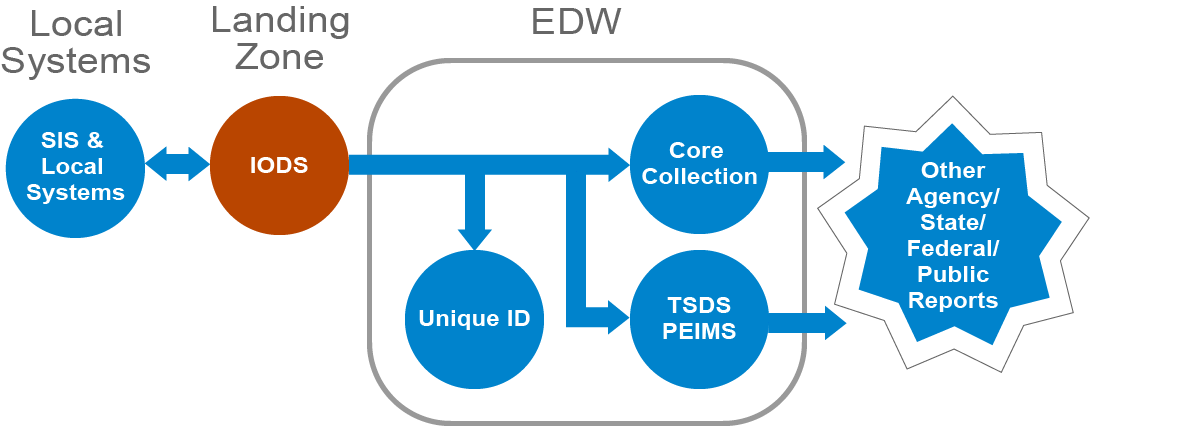
The Individual Operational Data Stores (IODSs) are data repositories for state reporting as well as local use. LEAs and ESCs submit data via transactional, near-real-time, automated loads using an Application Programming Interface (API) based on the Texas Education Data Standards (TEDS).
TSDS Data Reporting
Publish from Local Source Systems to the IODS
Each LEA and ESC will be provided with an IODS for state reporting and local use. Users will be able to publish data in near real-time through API transactions from their source systems. An LEA/ESC may publish data to the IODS beyond the reporting requirements of TSDS for their own local use and interoperability.
Promote to the TSDS Applications
An LEA or ESC will be able to promote state reportable data from the IODS and perform the necessary actions to validate and complete their TSDS data submissions from the PEIMS and Core applications.
How Data Flows
LEA source systems communicate with the IODSs in the Landing Zone which, in turn, feeds the following three systems in the EDW: Unique ID, Core Collection, and TSDS PEIMS. Two EDW systems: Core Collection and TSDS PEIMS in turn feed Other Agency/State/Federal/Public Reporting Systems.
Benefits for an LEA or ESC
- Automates the data-loading process for LEAs and ESCs.
- Enables loading independent of specific TSDS submissions.
- Eliminates the need for an LEA or ESC to manually extract and load XML files for TSDS state reporting.
- Offers more robust validations and reporting earlier in the data loading process.
- Allows for better alignment to existing vendor products by using the current version of the Ed-Fi standard.
- Provides each LEA or ESC with an IODS that can be used for local needs as well as state reporting.


